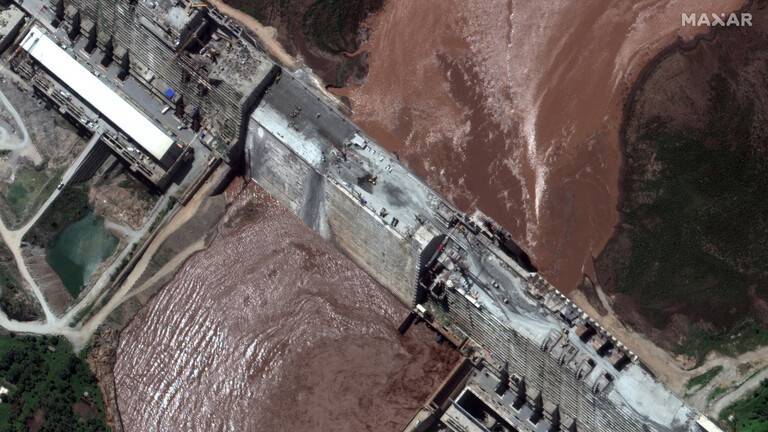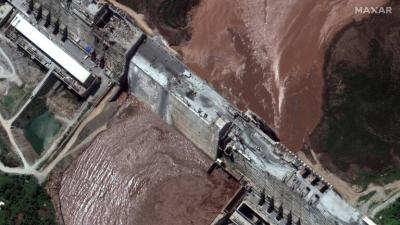Professor of Water Resources and Geology at Cairo University, Abbas Sharaki, revealed satellite images indicating that the eastern spillway gate is fully opened in preparation for the fifth filling of the Grand Ethiopian Renaissance Dam. Sharaki explained on his official Facebook account that this was expected after the two turbines remained inactive since September 16, and their inability to pass the excess water that flows over the middle passage, which is estimated in November to be around 85 million cubic meters daily, despite the turbines being able to pass about 100 million cubic meters per day when fully operational.
The images also show the continuation of water flow over the middle passage, which is expected to stop next week, after which the middle passage will dry up in preparation for concrete work to increase the height of the dam's sides and the middle passage.
He added, "Ethiopia took this step for the fourth filling on January 9 of last year, when it opened both spillway gates at once, then closed the western one on February 23, and increased the dam's height by about 25 meters. However, it began this year approximately three months early, giving it sufficient time to raise the dam's height by about 20 meters remaining. If no agreement is reached, it is expected to complete all concrete works, reaching a height of 645 meters above sea level for the sides of the dam and 640 meters for the middle passage, storing 23 billion cubic meters, until the total storage reaches 64 billion cubic meters. This is the actual maximum capacity of the dam, not 74 billion cubic meters, due to the middle passage being 5 meters lower than the sides."
Sharaki noted that "the fifth filling, like previous storages, constitutes a violation of the Declaration of Principles of the Grand Ethiopian Renaissance Dam from March 2015, all previous agreements, the presidential statement of the Security Council in September 2021, and all international norms regarding the establishment of water projects on shared rivers. The six previous violations include the first filling in 2020, the second in 2021, operation of the first turbine in February 2022, the third filling in 2022, operation of the second turbine in August 2022, and the fourth filling."




